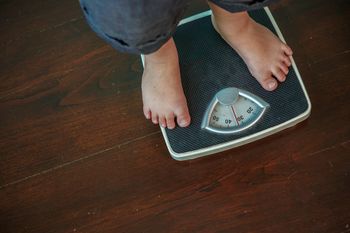In 2014, when American filmmaker Stephanie Soechtig released her documentary Fed Up, the Rolling Stone magazine published a review that was, on the one hand, full of praise, but on the other, deeply alarmed. It read, “Forget zombies and vampires, the scariest thing onscreen anywhere right now is Fed Up. Even Godzilla can’t rival Big Sugar as a weapon of mass destruction.”
Fed Up argued that America’s obesity epidemic doesn't stem solely from individual choices or lack of exercise but from a sugar-laden, ultra-processed food industry, aided by a complicit government. The documentary equated sugar addiction to drug addiction and challenged the widely-held belief that obesity is simply a matter of excess calories. One of its most powerful elements was its focus on real-life stories of overweight and obese children in the US, who were often blamed for their health conditions when, in reality, they were victims of a broken system.
The issue of obesity among the younger generation―especially children―is not just an American problem. The Global Burden of Disease Study published in Lancet in March 2025 forecasts that by 2050, over half the world’s adult population (3.8 billion) and a third of all children and adolescents (746 million) will be overweight or obese. The study also says that this poses an unparalleled threat of premature diseases and deaths.
One of the most alarming projections is that by 2050, India will have the highest number of overweight or obese young people in the age group of 15–24, and the second-highest in the age group of 5–14. In the 15–24 category alone, India is expected to have nearly 39.6 million overweight or obese youth. Additionally, more than 30.5 million Indian children will be obese by then.
If these are the projections for the future, some contemporary data already paints a grim picture. Apollo Hospitals’ Health of the Nation Report 2025 revealed that the crisis is already here. As part of a study, the Apollo Shine Foundation screened 2.85 lakh students from six states. It found that 28 per cent of college students were overweight, and 8 per cent of schoolchildren were obese. Alarmingly, 19 per cent of college students and 9 per cent of high school students were found to be pre-hypertensive, while 2 per cent of college students had elevated blood sugar levels.
The Union government has launched several initiatives―including the Fit India Movement, National Programme for Prevention and Control of Non-Communicable Diseases (NP-NCD), Poshan Abhiyaan, Eat Right India, and Khelo India―to promote healthier lifestyles, improved nutrition, and increased physical activity. Regulatory bodies like the Food Safety and Standards Authority of India (FSSAI) are also working to enforce food labelling norms and restrict the marketing of high-sugar foods, particularly those targeted at children.
Nevertheless, health remains a state subject, and efforts to strengthen public health systems, promote sustainable food habits, and raise awareness remain fragmented and vary significantly from state to state. The rising obesity epidemic demands recognition as a long-term national emergency―not only because it threatens the health of future generations but also because non-communicable diseases (NCDs) impose a massive economic burden on state health care systems. To address this, the Union government in collaboration with states should launch pilot programmes in high-obesity states to test a national framework that would enforce stricter food labelling and introduce a tiered taxation system based on sugar content in packaged edibles, drinks, and select fast foods. There should also be measures to incentivise low-sugar diets through school-based nutrition campaigns and subsidies for healthier food options through the Public Distribution System (PDS).


